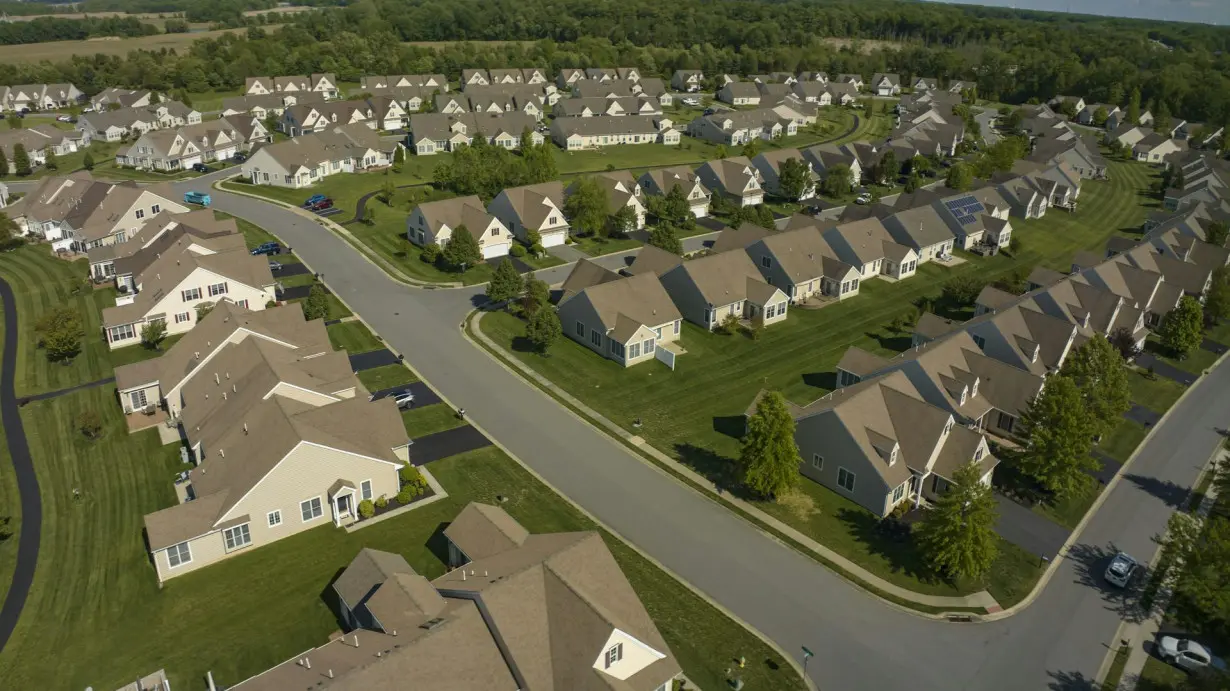Local governments often try to combat housing costs and create affordable housing by passing legislation that changes current zoning and land-use regulations. But the changes are not without controversy. SciLine interviewed Jessica Trounstine, the centennial chair and professor of political science at Vanderbilt University, who discussed why rising housing prices and shortages are happening at the same time, how some zoning policies still lead to segregation, and why many zoning changes that are environmentally friendly are unpopular with the public.
The Conversation has collaborated with SciLine to bring you highlights from the discussion, which have been edited for brevity and clarity.
What’s causing the current housing shortages and high housing costs in the U.S.?
Jessica Trounstine: Most metropolitan areas have seen housing shortages and skyrocketing prices over the last decade, both for rentals and for mortgages. And as those prices have gone up, tax assessments have also gone up, leading to higher property tax bills. So the total amount of money that residents are paying for their housing is higher than it used to be.
When households pay more than 30% of their income toward housing, the census calls those households “cost burdened.” And according to some recent data, more than a third of households in the U.S. are cost burdened, and the figures are even higher for renters than for owners. In some metropolitan areas, greater than 50% of renters are cost burdened.
How do local governments influence housing availability?
Jessica Trounstine: Local governments can make it difficult to build housing, which contributes in a fundamental way to housing shortages and skyrocketing prices. They do things like charge high fees for development or put in place cumbersome review processes. They can implement historical overlays or create open-space requirements.
But the most important way local governments affect housing shortages is by prohibiting density and allowing only single-family, detached units to be built. Many cities explicitly prohibit multifamily housing. Anything from duplexes to high-rises might be prohibited by a city’s zoning or regulatory code.
They can also do things like have requirements for large setbacks from the street. They can enact minimum lot sizes for every unit. Because higher density and smaller housing units are less expensive, these regulations that limit density are correlated with higher housing costs.
Many local land-use regulations have been in effect for a long time. Why are they causing such problems now?
Jessica Trounstine: It’s true that these regulations were first used 100 years ago, but the current pattern of restrictive zoning did not really take off across the U.S. until the 1970s. Land-use regulations tend to get layered over time. Once a local government enacts land-use regulations, they don’t tend to roll them back. So over time, land-use regulations frequently get more and more exclusionary.
At the same time, population has increased in major metropolitan areas for a variety of different reasons. But housing development has slowed. The market gets squeezed over time. It is only in recent decades that we’ve really seen the confluence of all of these events, so that even the price of housing for middle-income families can be very high.
How have zoning and land-use policies contributed to racial segregation?
Jessica Trounstine: Segregation for many decades was driven predominantly by private market decisions: racial steering, blockbusting, restrictive covenants, and violence, even, to defend the color line. But those tactics became at least technically illegal in the middle of the 20th century through court cases, state laws and the federal Fair Housing Act of 1968.
Restrictive zoning essentially arose to take the place of these kinds of tactics. The U.S. is much more segregated today than it would be if it weren’t for restrictive zoning. On top of that, restrictive zoning freezes in place segregation patterns that were created by overt racist actions decades ago. We are about twice as segregated as we would otherwise be if we didn’t have these kinds of regulations in place.
What strategies can municipalities use to address housing shortages and segregation?
Jessica Trounstine: They can think about having all kinds of housing in every neighborhood – all forms of housing to appeal to different kinds of people at different income levels.
They can do things like eliminate parking minimums and expand height restrictions. Even more dramatically, they can create public funds for low-income developments.
What strategies make zoning and land-use reforms more effective?
Jessica Trounstine: No single reform can work on its own. Simply allowing duplexes to be built is frequently not enough. But we do know that packages of reforms can work together.
You can permit duplexes but also be attentive to floor-area ratios and minimum lot sizes at the same time. And addressing all of these different regulatory restrictions in some way can expand opportunity in the housing market. There is also evidence that something happening in California called “the builders remedy” is working to increase development. It allows developers to overrule, essentially, local regulations because of state-level policy.
Some of my work also shows that lawsuits can be effective at addressing segregation patterns and long-standing regulatory constriction in the housing market.
How do zoning and land-use decisions affect the environment?
Jessica Trounstine: Sprawl, or expanding development farther and farther away from population density, is in itself harmful to the environment. It causes long commutes and changes the built environment in ways that can be costly for the environment. Increasing density, pulling people back toward the center, is an environmentally friendly kind of policy.
What is the connection between zoning reforms and gentrification?
Jessica Trounstine: It is true, historically, that when neighborhoods witness economic and racial transition, marginalized communities are harmed in the process. So, one response to the concerns about gentrification is to ensure that marginalized communities are at the table and participating in the conversations about the built environment and about development.
What’s not clear in the gentrification research more generally is whether new development causes gentrification. And so before we limit development in order to prevent gentrification, we need more research and a better understanding of the interaction between those two mechanisms.
Watch the full interview to hear more.
SciLine is a free service based at the nonprofit American Association for the Advancement of Science that helps journalists include scientific evidence and experts in their news stories.

Jessica Trounstine receives funding from the Carnegie Corporation of New York.
Source: The Conversation

 UK inflation unexpectedly eases in December, which could reduce pressure in bond markets
UK inflation unexpectedly eases in December, which could reduce pressure in bond markets
 Body count from South African mine siege rises to 60
Body count from South African mine siege rises to 60
 US importers rush in goods from China as Trump tariff threat looms
US importers rush in goods from China as Trump tariff threat looms
 Novak Djokovic breaks a tie with Roger Federer for the most Grand Slam matches in tennis history
Novak Djokovic breaks a tie with Roger Federer for the most Grand Slam matches in tennis history
 China's RedNote: what you need to know about the app TikTok users are flocking to
China's RedNote: what you need to know about the app TikTok users are flocking to
 British author Neil Gaiman denies ever engaging in non-consensual sex as more accusers come forward
British author Neil Gaiman denies ever engaging in non-consensual sex as more accusers come forward
 Many cities prohibit duplexes and high-rises. Although residents enjoy the extra space, it contributes to housing costs.
Many cities prohibit duplexes and high-rises. Although residents enjoy the extra space, it contributes to housing costs.







